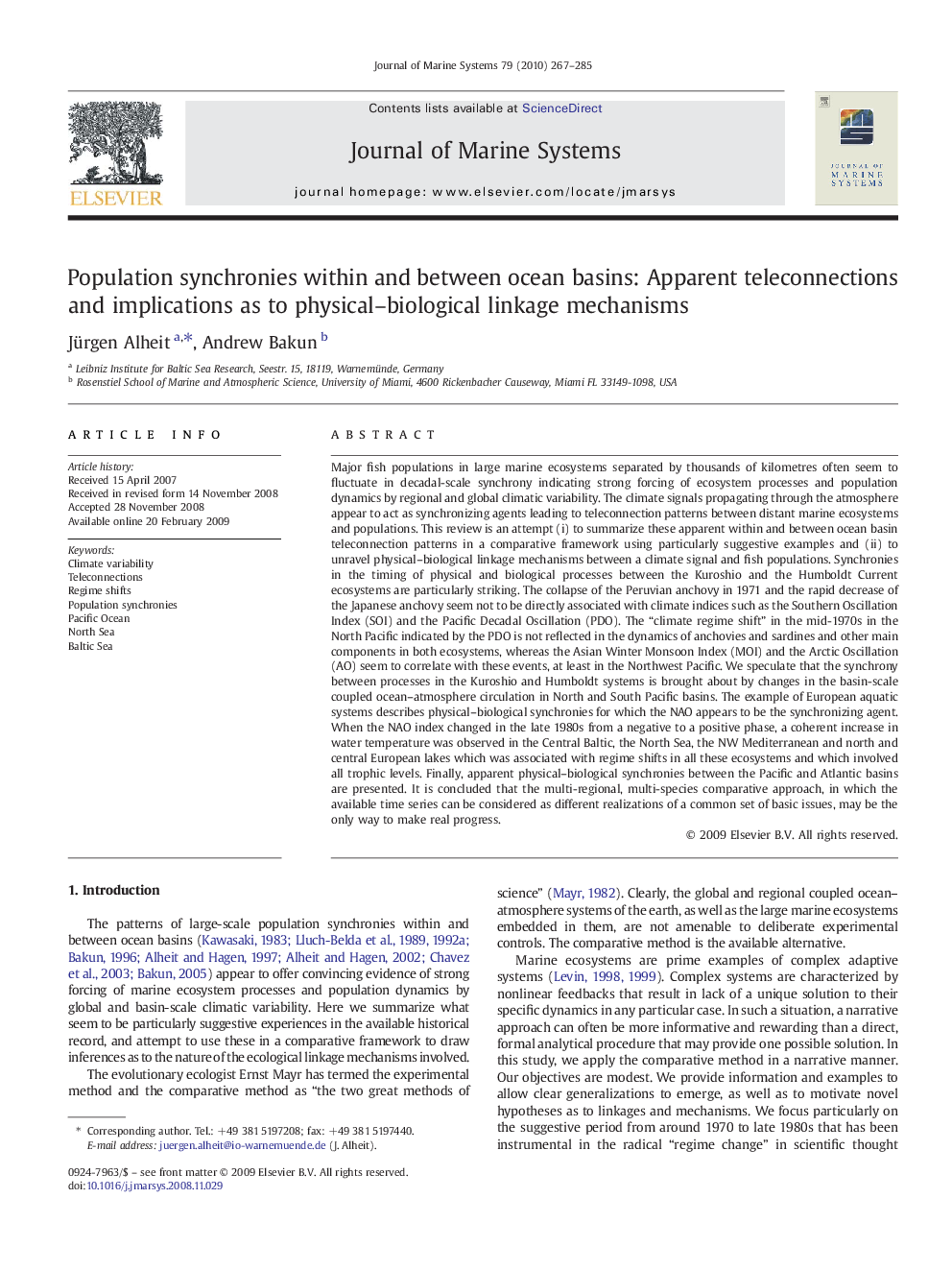| کد مقاله | کد نشریه | سال انتشار | مقاله انگلیسی | نسخه تمام متن |
|---|---|---|---|---|
| 4548624 | 1627336 | 2010 | 19 صفحه PDF | دانلود رایگان |

Major fish populations in large marine ecosystems separated by thousands of kilometres often seem to fluctuate in decadal-scale synchrony indicating strong forcing of ecosystem processes and population dynamics by regional and global climatic variability. The climate signals propagating through the atmosphere appear to act as synchronizing agents leading to teleconnection patterns between distant marine ecosystems and populations. This review is an attempt (i) to summarize these apparent within and between ocean basin teleconnection patterns in a comparative framework using particularly suggestive examples and (ii) to unravel physical–biological linkage mechanisms between a climate signal and fish populations. Synchronies in the timing of physical and biological processes between the Kuroshio and the Humboldt Current ecosystems are particularly striking. The collapse of the Peruvian anchovy in 1971 and the rapid decrease of the Japanese anchovy seem not to be directly associated with climate indices such as the Southern Oscillation Index (SOI) and the Pacific Decadal Oscillation (PDO). The “climate regime shift” in the mid-1970s in the North Pacific indicated by the PDO is not reflected in the dynamics of anchovies and sardines and other main components in both ecosystems, whereas the Asian Winter Monsoon Index (MOI) and the Arctic Oscillation (AO) seem to correlate with these events, at least in the Northwest Pacific. We speculate that the synchrony between processes in the Kuroshio and Humboldt systems is brought about by changes in the basin-scale coupled ocean–atmosphere circulation in North and South Pacific basins. The example of European aquatic systems describes physical–biological synchronies for which the NAO appears to be the synchronizing agent. When the NAO index changed in the late 1980s from a negative to a positive phase, a coherent increase in water temperature was observed in the Central Baltic, the North Sea, the NW Mediterranean and north and central European lakes which was associated with regime shifts in all these ecosystems and which involved all trophic levels. Finally, apparent physical–biological synchronies between the Pacific and Atlantic basins are presented. It is concluded that the multi-regional, multi-species comparative approach, in which the available time series can be considered as different realizations of a common set of basic issues, may be the only way to make real progress.
Journal: Journal of Marine Systems - Volume 79, Issues 3–4, 10 February 2010, Pages 267–285